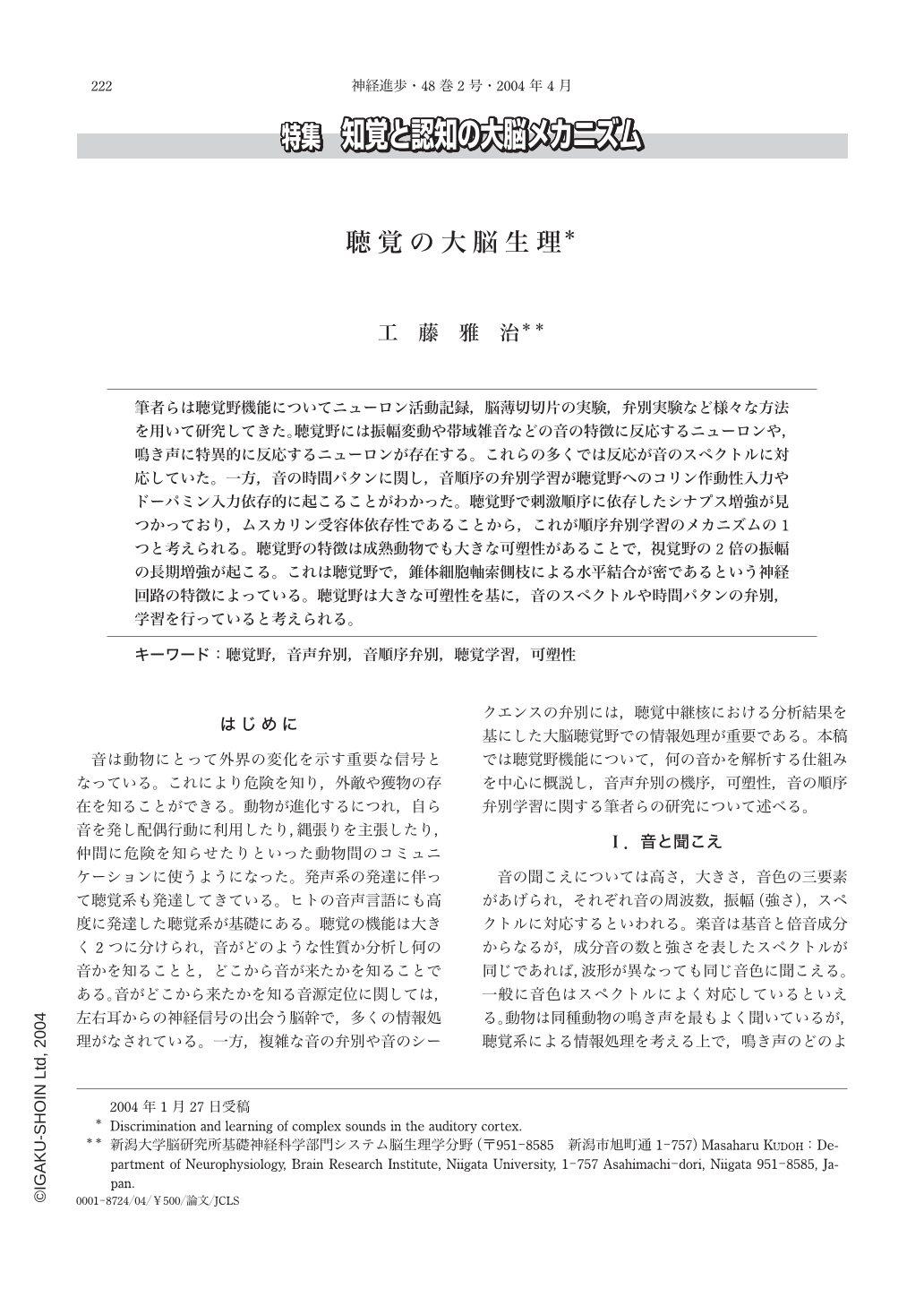Japanese
English
- 有料閲覧
- Abstract 文献概要
- 1ページ目 Look Inside
筆者らは聴覚野機能についてニューロン活動記録,脳薄切切片の実験,弁別実験など様々な方法を用いて研究してきた。聴覚野には振幅変動や帯域雑音などの音の特徴に反応するニューロンや,鳴き声に特異的に反応するニューロンが存在する。これらの多くでは反応が音のスペクトルに対応していた。一方,音の時間パタンに関し,音順序の弁別学習が聴覚野へのコリン作動性入力やドーパミン入力依存的に起こることがわかった。聴覚野で刺激順序に依存したシナプス増強が見つかっており,ムスカリン受容体依存性であることから,これが順序弁別学習のメカニズムの1つと考えられる。聴覚野の特徴は成熟動物でも大きな可塑性があることで,視覚野の2倍の振幅の長期増強が起こる。これは聴覚野で,錐体細胞軸索側枝による水平結合が密であるという神経回路の特徴によっている。聴覚野は大きな可塑性を基に,音のスペクトルや時間パタンの弁別,学習を行っていると考えられる。
We investigated functions of the auditory cortex(AC)with various approaches:recordings of neuronal responses to complex sounds, experiments of neuronal plasticity in brain slice preparations, and behavioral studies. About half of AC neurons in cats were poorly selective neurons that respond to amplitude modulated tones or bands of noise, while about 10%of neurons were highly selective detectors that respond exclusively to cat voices. Responses of many neurons were correlated with spectrum patterns of stimulus sounds. Long-term potentiation in the AC of adult rats was twice as large as that in the visual cortex. Marked LTP in the AC was attributed to well developed horizontal axon collaterals of supragranular pyramidal neurons in the AC. Discrimination learning of sound order by rats was dependent on cholinergic inputs to the AC. Synaptic potentiation in the supragranular layers following heterosynaptic stimulation was dependent on stimulus sequence in the AC. The sequence dependent synaptic potentiation was dependent on muscarinic receptors, suggesting that it is a part of mechanisms underlying discrimination learning of sound order. Neuronal plasticity may play critical roles in discrimination and learning of sounds with complex spectrum and time patterns in the AC of adult animals.
(Received:January 27, 2004)

Copyright © 2004, Igaku-Shoin Ltd. All rights reserved.


